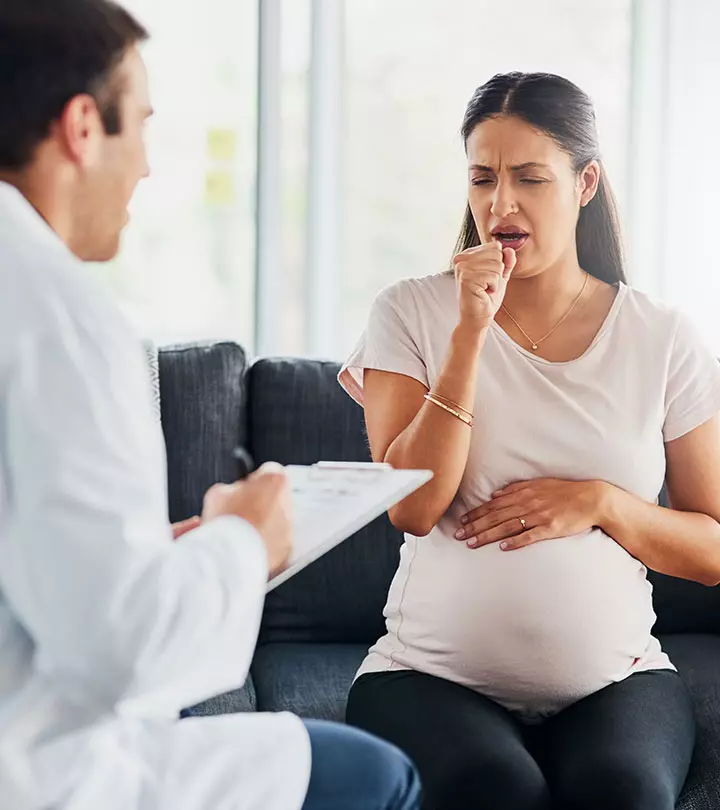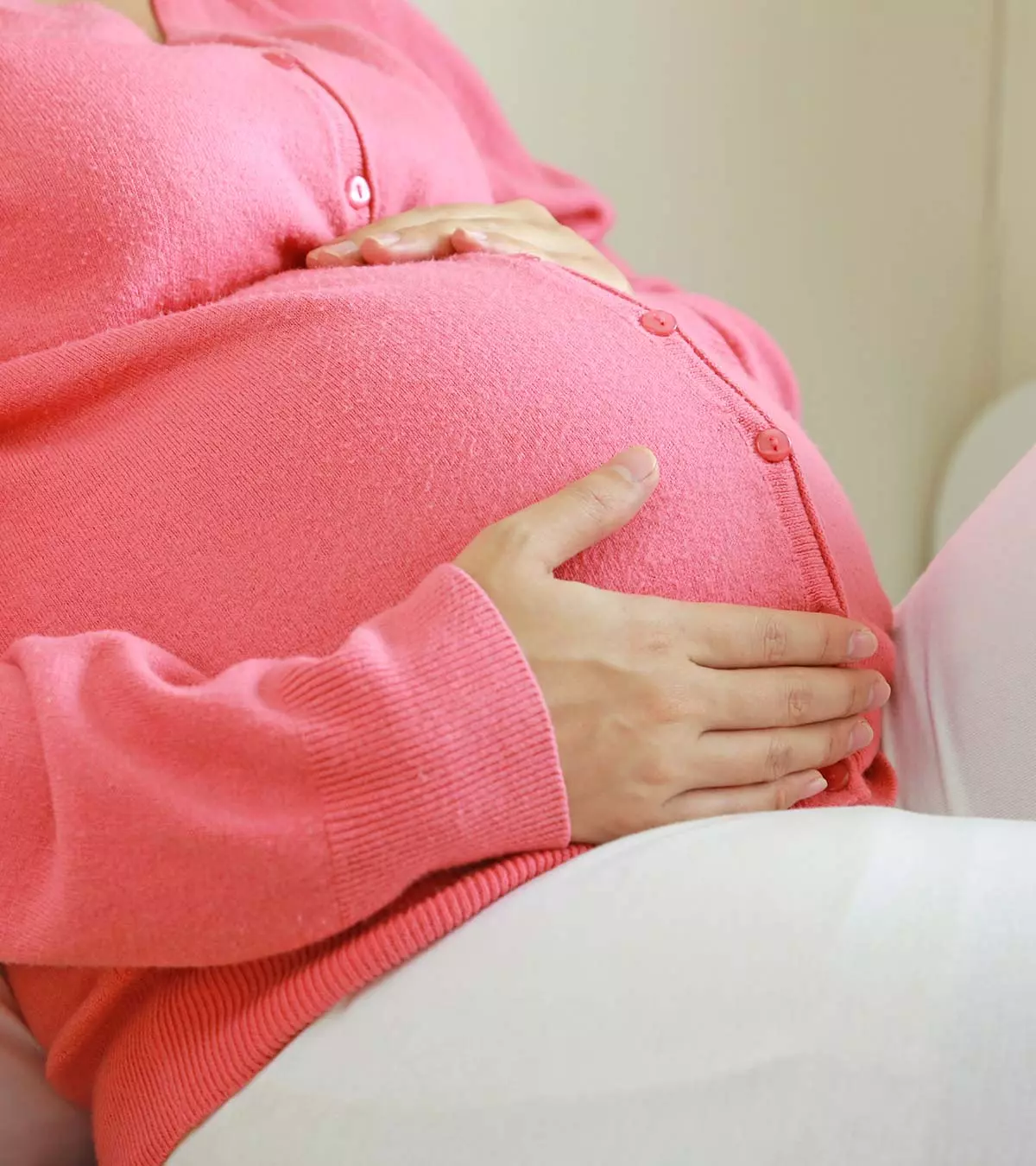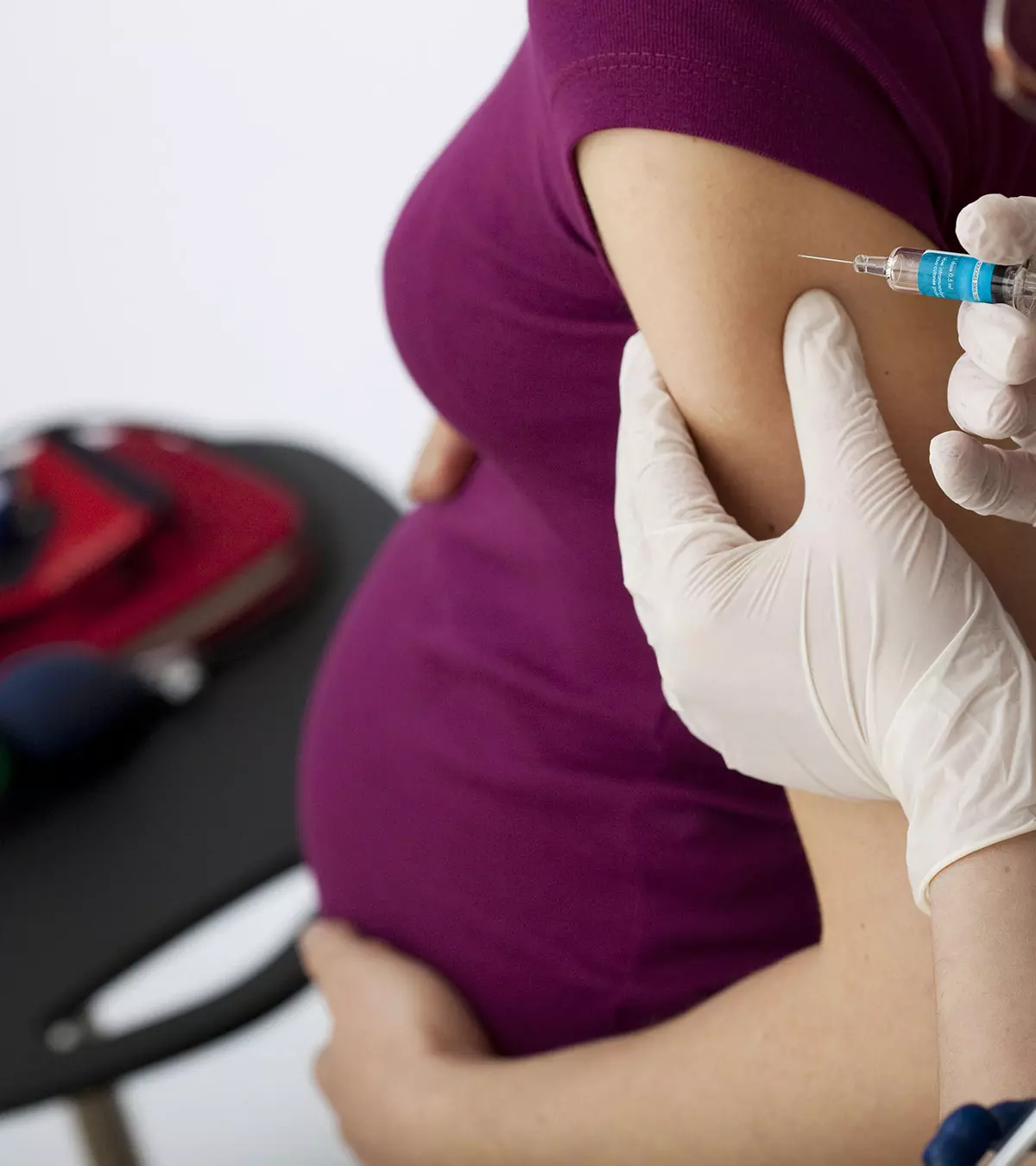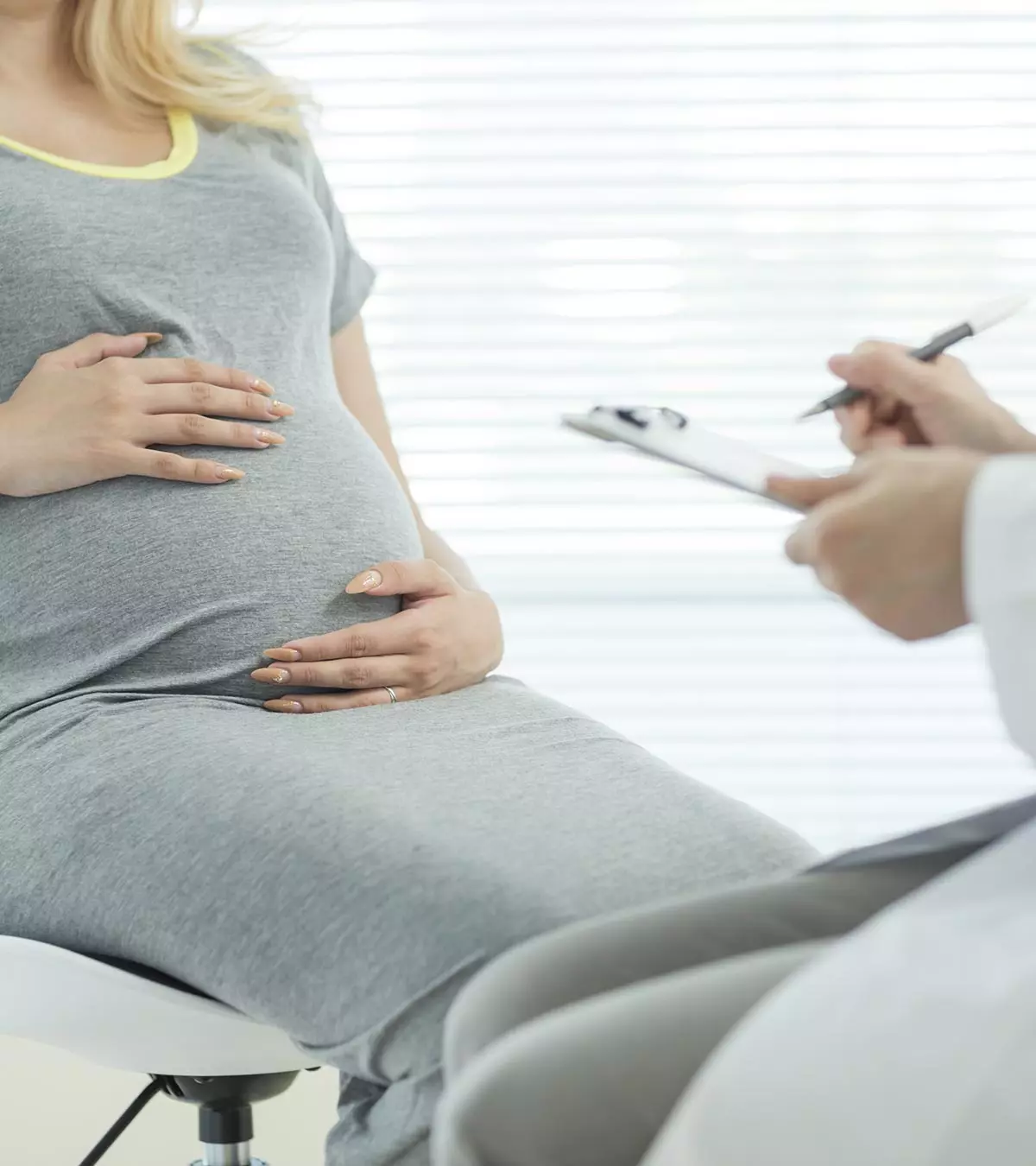
Image: Shutterstock
The placenta is an organ that develops in the uterine wall when a woman is pregnant. The critical functions of the placenta during pregnancy include the growth and development of the fetus (1). It also aids in maternal-fetal exchange by transporting oxygen and nutrients to the fetus and removing the waste from the fetal blood.

Before we begin any further, let us understand what a placenta is. A placenta is a life-supporting organ for the growing fetus; however, sometimes, its functions may be hindered due to several factors, such as blood clots, abdominal trauma, and blood pressure. These factors may lead to pregnancy complications.
This post informs you about the functions of the placenta, the problems related to it, the symptoms of such complications, and ways to reduce the risk.
Key Pointers
- The placenta connects the mother to the fetus and provides essential oxygen and nutrients to the fetus.
- It protects the fetus from potential toxins, including food additives, drugs, and pollutants.
- Factors such as the mother’s age, substance abuse, and high blood pressure can affect the functioning of the placenta.
- The placenta produces growth-regulating hormones that aid fetal development.
- Symptoms of placental problems include back and abdominal pain, vaginal bleeding, and decreased fetal movement.
- Regular prenatal care and monitoring can help identify potential placental problems to ensure proper maternal and fetal health.
Why Is The Placenta Important?
The placenta is your unborn baby’s life support system and plays a key role in its development. It connects the mother to the fetus through the umbilical cord during gestation period and carries out the functions your fetus cannot perform by itself (2).
 Quick fact
Quick factDevelopment Of The Placenta
The placenta starts developing shortly after conception—typically after seven to ten days. It starts with a few cells and fully develops into an approximately 10-inch long and 1-inch thick disc of bumpy tissue, weighing about 16 ounces by 18 to 20 weeks of pregnancy. By the 12th week of pregnancy, the placenta takes on the role of hormone production (22).
Functions Of The Placenta During Pregnancy
The placenta serves the functions of organs such as the lungs, kidneys, and liver until your fetus develops them. Some of the main functions that the placenta performs include (1) (3):
- Respiratory, excretory, nutritive, endocrineiSystem of glands that secrete hormones directly into the bloodstream , barrier function, immunological function.
- Supplying oxygen and output of co2 is done via simple diffusion (respiratory) and nutrients to the fetus via the umbilical cord (nutritive).
- Clearing out waste products, such as urea, creatinine, uric acid from the fetus (excretory).
- Metabolizing and releasing food substances and required products into the maternal and fetal blood circulations.
- Protecting the fetus from xenobiotics (compounds including food additives, drugs, and environmental pollutants).
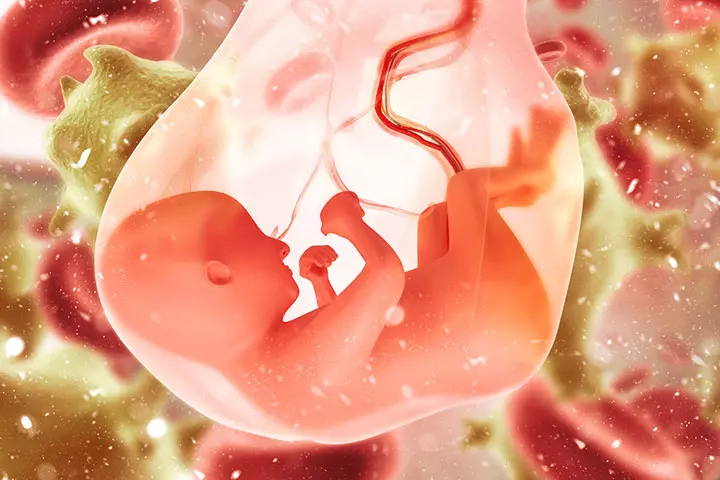
- Producing steroid and peptide hormones that help in the growth and development of the baby (endocrine).
- Protecting the fetus from infections (bacterial) and maternal diseases.
- Fetal membrane protects the transfer of noxiousiExtremely harmful substances less than 500 dalton except antibody and antigen (barrier).
- Produces different enzymes such as diamine oxidase and oxytocinase (enzymatic).
 Things to know
Things to knowFactors That Affect The Placental Function

Various factors can affect the placental function during pregnancy and make the mother prone to certain risks. They may include:
- Mother’s age: Mothers who conceive after the age of 35 are likely to experience placental problems (4).
- Twin or multiple pregnancies: Mothers carrying more than one baby are likely to develop a weak placenta. It may raise the risk of early placental detachment (5).
- Premature rupture of membranes: Your baby is usually cushioned and protected by the amniotic sac (membrane filled with amniotic fluid). If it breaks or leaks before labor, you may be at risk of placental infections (chorioamnionitis) and placental abruption (premature placental separation from the uterus) (6).
- Blood-clotting disorders: Blood clotting as a result of genetic susceptibility, obesity, increased maternal age, medical illnesses, prolonged immobility, etc., are likely to form inside the placenta too. It may, sometimes, cut off the blood supply, and pose danger to the baby (7).
- Abdominal trauma: A fall or any type of blow that causes abdominal trauma increases the risk of placenta abruption (8).
- Prior placental problems: If you have experienced any placental problems in your previous pregnancy, you might develop it again (9).
- Prior uterine surgery: Any previous surgery, such as cesarean section or uterine fibroidsiNon-malignant, fibrous tumors that are commonly found on the wall of the uterus removal surgery, may increase your risk of placental conditions (10).
- Blood pressure: High blood pressure or hypertension levels might affect your placental function (11).
- Substance abuse: If you smoke or take drugs, you may be at risk of placental conditions (12).
Some of the possible problems related to the placenta include:
- Placental abruption: It is a condition in which the placenta separates from the uterine wall before delivery. It could deprive the fetus of oxygen and nutrients and may result in premature birth, stillbirth, and growth problems; it can cause severe bleeding (13). One-third of the cases of abruption are associated with any form of hypertension.
- Placenta previa: It occurs when the placenta lies low in the lower uterine segment of uterus and covers the opening of the cervix partially or totally. It may, therefore, block the baby’s exit from the womb, resulting in preterm labor, placental tear, and antepartumiThe period leading up to the birth of a baby and intrapartumiThe period from the onset of labor to the delivery of the placenta hemorrhage (14) (15).
- Placenta accreta: This rare complication occurs when the placenta grows into the uterine wall and is unable to be detached properly during delivery. It could lead to vaginal bleeding during and after delivery (16).
- Retained placenta: A part of the placenta or membranes remain intact in the womb after childbirth. It may occur when the placenta gets stuck behind a uterine muscle. It could be a life-threatening condition and requires manual removal of placenta (MROP) after a few hours of delivery (17).
- Placental insufficiency: The placenta may not be able to transfer nutrients to the fetus. It may lead to fetal growth restriction (FGR), stillbirth, and low birth weight (18).
- Anterior placenta: The placenta develops on the front of the uterus with the fetus behind it. It could make it difficult for you to feel the fetal kicks and for sonographers to find the heartbeat. It may lead to placental abruption, intrauterine growth restriction, and fetal death (19).
Placenta previa may resolve as pregnancy progresses. Liz Miller, a mother from the United States, says, “We had thought for a long time that he might be early- due to the possibility of a c-section because of complications with my placenta. I had what is called placenta previa- where the placenta sits on top of the cervix, getting in the way of a natural birth. However, my placenta began to move out of the way and by 36 weeks, I was cleared to try a vaginal birth. I was ready to go (i).”
 Quick fact
Quick factWhat Are The Signs And Symptoms Of Placental Problems?

The signs and symptoms that may indicate placental problems include:
- Vaginal bleeding
- Back pain
- Abdominal pain
- Constant uterine contractions
- Decreased fetal movement
You should see your doctor if you begin to experience these symptoms suddenly and often.
Can You Reduce The Risk Of Placental Problems?
You might not be able to prevent several of the placental problems. But you may take a few measures for a healthy pregnancy.
- Go for regular prenatal checkups. According to the CDC National Center for Health Statistics, about 2.1% of mothers received no prenatal care, and 12.5% received insufficient care, potentially leading to undetected placental problems during pregnancy. Therefore, prioritizing proper and timely prenatal care is crucial for supporting a healthy pregnancy.

- Manage health conditions such as blood pressure and gestational diabetesiA condition characterized by elevated blood sugar levels due to hormonal and physical changes in pregnancy .
- Quit smoking and use of illegal drugs.
- Maintain a healthy lifestyle and ensure proper nutrition and adequate hydration before and during pregnancy.
- Inform your doctor if you had any placental problem in your previous pregnancy or had any surgery of the uterus.
How Is The Placenta Delivered?
Usually there are mild contractions (sometimes there may not) that could help the placenta to separate from the uterine wall and move through the birth canal.
In a vaginal delivery, the third stage of labor begins with childbirth and ends with placental delivery. Your practitioner may inject Pitocin (oxytocin) into your body to induce uterine contraction and speed up placenta expulsion (20).
In a C-section, your practitioner physically removes the placenta before closing the incision. The remaining fragments are removed to prevent infection and bleeding (21).
Upon delivering the placenta, you may decide whether to dispose of it or preserve it for potential therapeutic use.
Does A Doctor Check For Placental Abnormalities Even Without Symptoms?
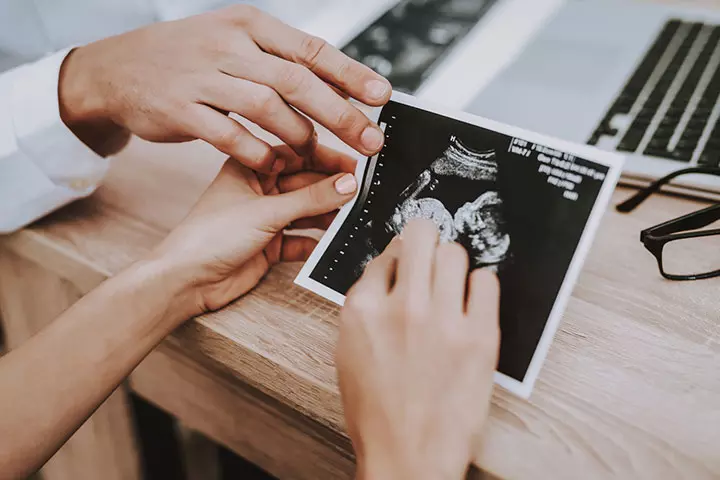
During the regular ultrasound scans, the healthcare practitioner checks for all possible placental abnormalities. Placental conditions are likely to be associated with vaginal bleeding, and it is important to seek medical attention.
Frequently Asked Questions
1. When does the placenta fully form?
The placenta fully forms by weeks 18 to 20 and continues to grow throughout the pregnancy. It is likely to weigh around one pound at the time of delivery (22).
2. Is the placenta part of the baby or the mother?
The placenta is a fetomaternal organ comprising two parts—the fetal placenta that develops from the same blastocyst, which forms the fetus (villous chorion), and the maternal placenta that develops from the tissue of the maternal uterus (decidua basalis).
3. Which placenta position is best for normal delivery?
The placental position may not be a cause of concern in several cases. The anterior placenta position—the placenta in front of the stomach—could make it difficult to hear the fetal heart sounds.
4. What is the correlation between the placenta and preterm labor?
Chronic inflammation of the placenta and problems with placental vasculature (blood flow to placenta from maternal and fetal systems) have been associated with preterm birth in scientific studies (23).
5. What prenatal testing is available to evaluate the placenta?
Placental abnormalities are usually screened using ultrasound scans. Such scans may be performed transabdominally or transvaginally (24).
6. How does the placenta protect the baby from infections?
The placenta forms a physical barrier between the maternal and fetal circulations that allows only selective substances to pass through and prevents the transfer of pathogens. However, some pathogens may still be transferred from the mother to the fetus and cause fetal infection (25).
7. Can stress cause placenta problems?
Dr. Laila Kaikavoosi, a UK-based hormone specialist, says, “The placenta can experience a negative impact from stress during pregnancy. The increased transfer of maternal cortisol to the fetus through the placenta, caused by stress or worry is only one explanation. The placenta can typically neutralize cortisol, but this defense system may fail under great stress. In addition, stress can influence the health and function of the placenta by causing disorders like pre-eclampsia, gestational diabetes, pre-diabetes, and maternal microbiota abnormalities.”
8. What hormones does the placenta produce during pregnancy?
During pregnancy, the placenta produces several hormones, including lactogen, estrogen, and progesterone (22).
The placenta supports a baby’s life inside the womb. It offers the baby nourishment and performs all the necessary functions that a baby can’t do itself. Hence, ensuring proper placental functioning is essential for the viability of the pregnancy. Going for prenatal checkups regularly and quitting smoking, alcohol, and illegal drugs are a few ways to prevent some of the placental problems. Keep your doctor informed about any placental or uterine problems so they can guide you better.
Infographic: What Are The Risks Of Pills Made From Your Own Placenta?
Placenta pills are capsules containing dried and powdered placenta collected after delivery. Some women may consume it believing it’s beneficial as the placenta nourishes the baby during pregnancy. However, it may cause harmful effects, and the benefits are not scientifically proven. Read through the infographic to know the risks of consuming placenta pills postpartum. Illustration: Momjunction Design Team
This video is an animated Portrayal of the Placenta Accreta Spectrum, explaining the complications during pregnancy. Watch this engaging video to learn more.
Personal Experience: Source
MomJunction articles include first-hand experiences to provide you with better insights through real-life narratives. Here are the sources of personal accounts referenced in this article.
i. My birth story;
https://apparentinprogress.blogspot.com/2025/11/my-birth-story.html
References
1. Gude NM, et al.; Growth and function of the normal human placenta; Thrombosis Research (2004).
2. Wang Y and Zhao S; Chapter 2 – Placental Blood Circulation; Vascular Biology of the Placenta; Morgan & Claypool Life Sciences; (2010).
3. Graham J. Burton and Abigail L. Fowden; The placenta: a multifaceted, transient organ; Philosophical Transactions of the Royal Society B: Biological Sciences (2015).
4. Advanced Maternal Age; Texas Children’s Hospital – Pavilion for Women
5. Complications of Multiple Pregnancy; University of Rochester Medical Center
6. Premature Rupture of Membranes (PROM)/Preterm Premature Rupture of Membranes (PPROM); The Children’s Hospital of Philadelphia
7. Blood Clotting & Pregnancy; American Society of Hematology
8. Lavin JP and Polsky SS; Abdominal trauma during pregnancy; Clinics in Perinatology (1983).
9. Kimberly M. Rathbun and Jason P. Hildebrand; Placenta Abnormalities; Treasure Island (FL): StatPearls Publishing (2025).
10. Tayyaba Majeed, et al.; Frequency of placenta previa in previously scarred and non scarred uterus; Pakistan Journal of Medical Sciences (2015).
11. Khattak SN, et al.; Association of maternal hypertension with placental abruption; Journal of Ayub Medical College Abbottabad (2012).
12. Punam Sachdeva, B.G. Patel, and B.K. Patel; Drug Use in Pregnancy; a Point to Ponder; Indian Journal of Pharmaceutical Sciences (2009).
13. Placental abruption; Better Health Channel; State Government of Victoria, Australia
14. Placenta previa; U.S. Department of Health and Human Services National Institutes of Health Abdulrahman Abdulelah Almnabri et al.; Management of Placenta Previa During Pregnancy; The Egyptian Journal of Hospital Medicine (2017)
15. Placenta Accreta; USF Health Obstetrics and Gynecology
16. Andrew D Weeks; The Retained Placenta; African Health Sciences (2001).
17. Usha Krishna and Sarita Bhalerao; Placental Insufficiency and Fetal Growth Restriction; J Obstet Gynaecol India (2011).
18. Shumaila Zia; Placental location and pregnancy outcome; Journal of the Turkish-German Gynecological Association (2013).
19. Labour and Delivery Care Module: 6. Active Management of the Third Stage of Labour; The Open University
20. Cesarean Delivery; Stanford Children’s Health
21. Stages of Development of the Fetus; The Merck Manual
22. Placenta; Cleveland Clinic
23. Sunitha C Suresh et al.; A comprehensive analysis of the association between placental pathology and recurrent preterm birth; American Journal of Obstetrics and Gynecology (2025)
24. Kimberly M. Rathbun and Jason P. Hildebrand; Placenta Abnormalities; National Library of Medicine (2025)
25. Regina Hoo et al.; Innate Immune Mechanisms to Protect Against Infection at the Human Decidual-Placental Interface; Frontiers in Immunology
Community Experiences
Join the conversation and become a part of our nurturing community! Share your stories, experiences, and insights to connect with fellow parents.
Read full bio of Subhashis Samajder
- Dr. Laila Kaikavoosi graduated from King's College London Medical School in 1999. She completed her General Practice training in London and gained membership in the Royal College of General Practitioners in 2007. Dr. Kaikavoosi is a Diplomat of the Faculty of Reproductive and Sexual Health. She practiced and trained in teaching hospitals in the UK and USA.
 Dr. Laila Kaikavoosi graduated from King's College London Medical School in 1999. She completed her General Practice training in London and gained membership in the Royal College of General Practitioners in 2007. Dr. Kaikavoosi is a Diplomat of the Faculty of Reproductive and Sexual Health. She practiced and trained in teaching hospitals in the UK and USA.
Dr. Laila Kaikavoosi graduated from King's College London Medical School in 1999. She completed her General Practice training in London and gained membership in the Royal College of General Practitioners in 2007. Dr. Kaikavoosi is a Diplomat of the Faculty of Reproductive and Sexual Health. She practiced and trained in teaching hospitals in the UK and USA.
Read full bio of Rebecca Malachi
Read full bio of Swati Patwal
Read full bio of Aneesha Amonz






